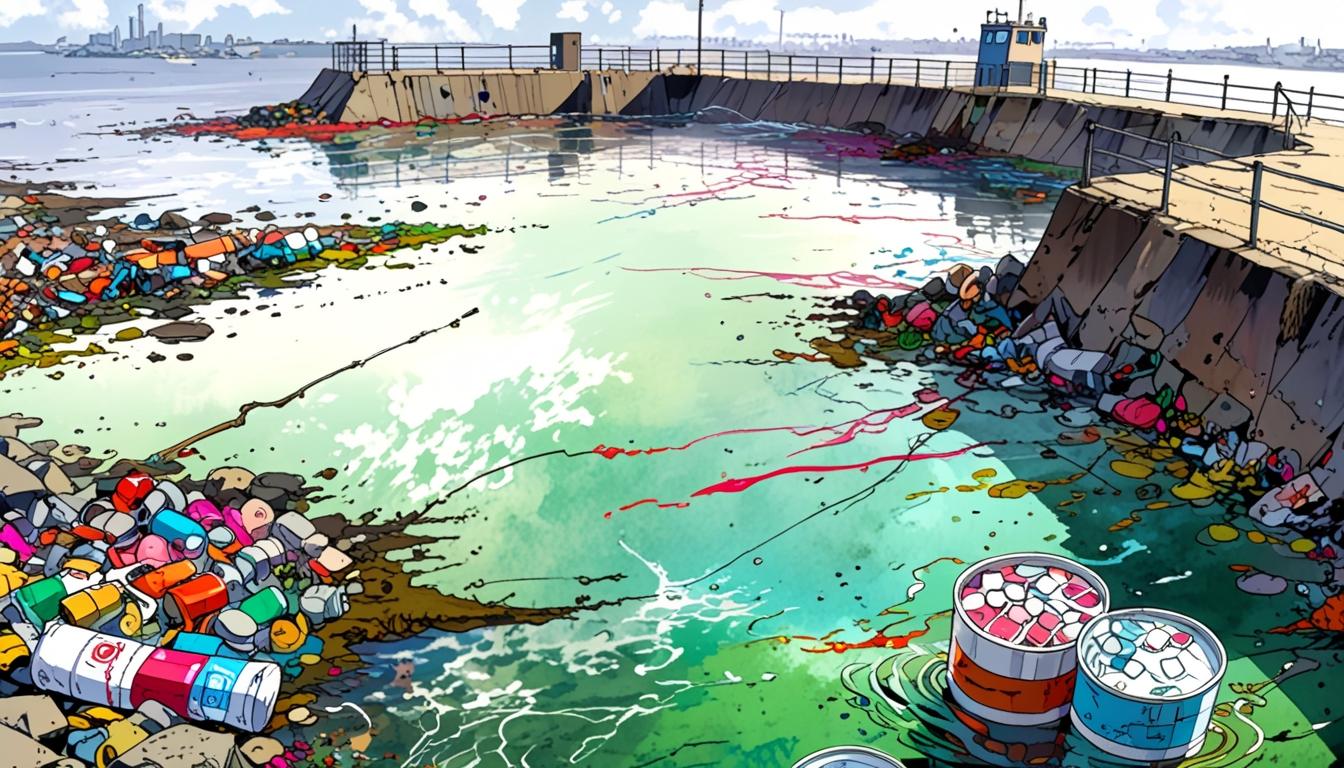Chemical pollution levels in the waters of Chichester and Langstone harbours, located on the southern coast of England and straddling the border of Hampshire and West Sussex, have surged by a staggering 100-fold, according to a recent study involving researchers from Brunel University, London, the University of Portsmouth, and Imperial College London. This alarming increase has been linked to combined sewer overflows (CSOs) following rain events and poses significant risks to the area’s ecological health, particularly affecting local wildlife in 21 designated sites of special scientific interest (SSSI).
The study examined 339 water samples and identified a total of 105 different contaminants, including 67 pharmaceuticals, 29 pesticides, and nine recreational drugs. Notably, it was found that the concentration of certain chemicals rose sharply—by over 100 times—following heavy rainfall that triggered CSOs, which discharge untreated sewage into the harbours.
Dr Thomas Miller from Brunel University highlighted the findings, stating, “CSO discharges were an obvious source of chemical pollution in these waters. Our study found that some chemicals increased by over 100-fold in water after these discharges, making them a high risk to aquatic wildlife.”
The research was published in the journal Environment International and was supported by the Clean Harbours Partnership (CHP). Among the chemicals detected, the insecticide imidacloprid—a common treatment for pet fleas—was noted for creating the highest environmental risk based on surface water levels. Dr Leon Barron from Imperial College London emphasized the concern regarding this specific contaminant, urging a reassessment of preventative treatments for pets to mitigate environmental risks.
Further investigation revealed the presence of 1,3-diphenylguanidine, a compound associated with rubber production, which researchers suggest may indicate pollution from tyre wear and associated road runoff after rainfall events. Lead author Jasmin Uhlhorn, a PhD student at Brunel University, indicated that the research underscores the complex mixtures of chemicals present in transitional and coastal water systems, which highlights the necessity for more thorough monitoring to investigate their sources, especially in relation to CSO discharges.
Professor Alex Ford from the University of Portsmouth's Institute of Marine Sciences remarked on the importance of understanding the impact of these contaminants, noting, “The impact of these contaminants we are yet to fully understand, but it’s clear from our data that they increase substantially under storm events which discharge untreated sewage.”
Rob Bailey, co-founder of CHP, acknowledged the troubling detection of such a diverse array of chemicals, saying, “It is concerning to see such a large cocktail of chemicals being detected and hear their effects are largely unknown. As a community-based organisation, we will continue to push for better monitoring of these protected marine habitats used by our members.”
This study arrives at a time when the Environment Agency reported that storm overflows in England released sewage into rivers, lakes, and coastal areas for over 3.61 million hours in 2024, amplifying concerns regarding the environmental impact of chemical pollution in vulnerable ecosystems such as the Chichester and Langstone harbours.
Source: Noah Wire Services
